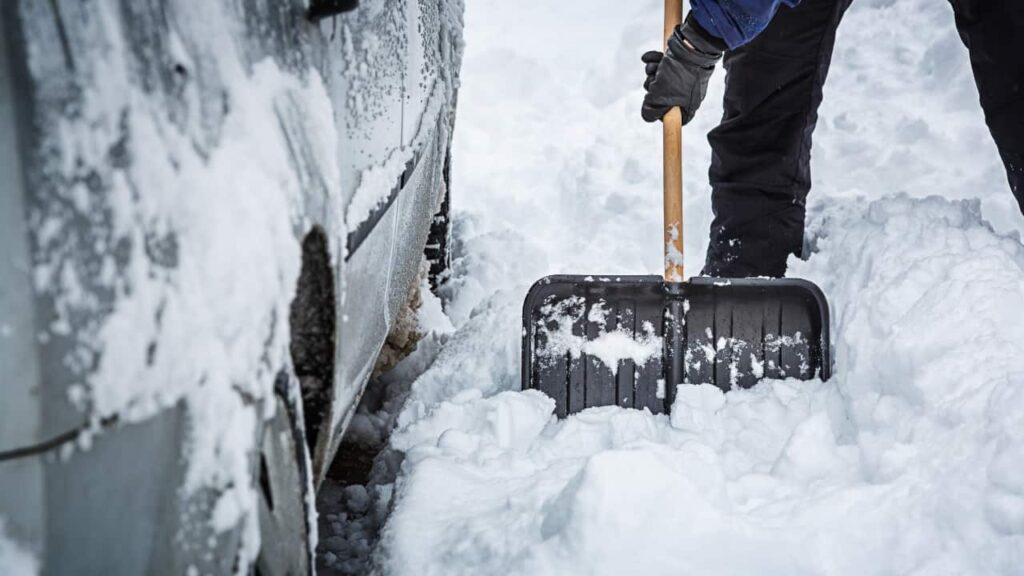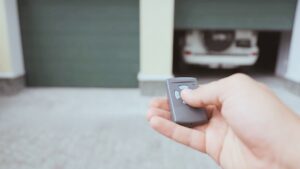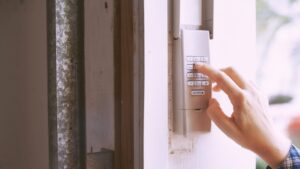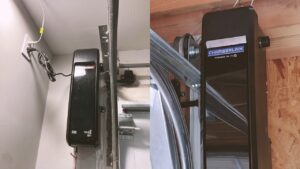Opening a garage door that’s frozen shut can be incredibly frustrating. You know what you need to do, but the stickiness of the wintry weather won’t let it happen!
At this point, you are limited with options and risk losing your job or an important client if you don’t know how to unfreeze garage door.
With that in mind, it would be best to know all the working tricks when your garage door won’t open in cold weather. While it can seem daunting to solve the issue, our guide below will provide a few easy-to-follow steps.
Why Is My Garage Door Frozen Shut?
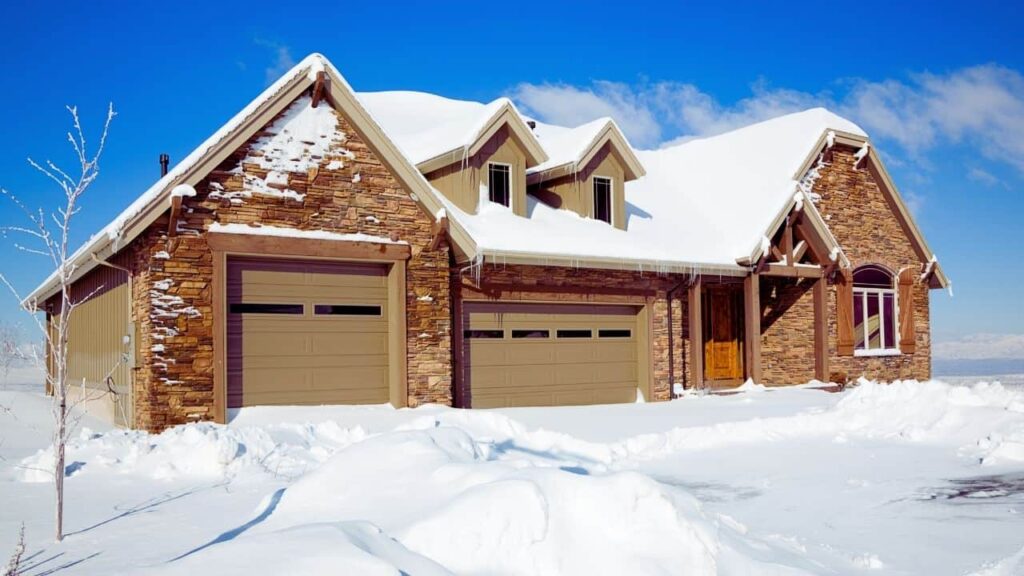
When temperatures fall, the water (mainly from rain or melted snow) gathered under the bottom seal can freeze, leading to a stuck garage door. The build-up ice acts as a bond between the garage door’s bottom seal and the floor, causing it not to open.
Garage Insiders Pro Tip: Don’t Force It Open
Before we dive into the steps of opening a frozen garage door, you should know that it’s counterintuitive to force it open.
When you’re rushing somewhere, and your frozen garage door won’t open, frustration may build up, forcing you to open it. But the bad news is that the frozen garage door won’t open. Instead, the motor may burn out, causing more problems.
In other cases, you might be tempted to force your garage door to open manually, which may lead you to slip on ice. That’s not all. You also risk damaging the Weather Seal to close gaps around your garage door.
Connect With A Garage Expert
Connect with local experts, Compare quotes, Get the best price.
How to Unfreeze Garage Door and Open it From Outside
In the United States, temperatures can fall to -30 degrees Fahrenheit, which is most likely to cause your garage door to freeze. You will be stuck in the house for hours if you need to know the best tricks to unfreeze your garage door.
Here are four steps to unfreeze your garage door to avoid such inconveniences.
So, what’s the right thing to do? Here are now the steps you need to take:
Step 1. Release the Emergency Cord
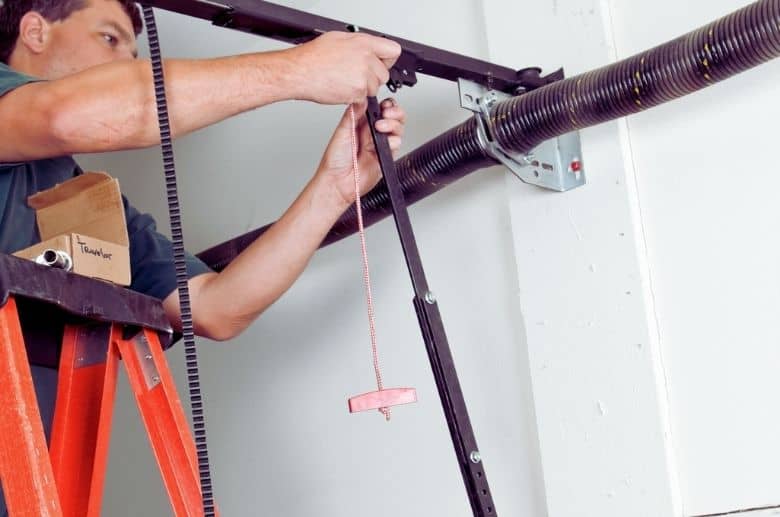
The release cord is typically located near the top of your garage door opener unit. It may be a red cord hanging down from the unit or a small lever that can be pushed or pulled when your garage door wont open or close.
Here are the steps to follow:
- Locate the emergency release cord or lever on your garage door opener. It’s usually a red cord that hangs down from the opener unit.
- Pull down on the emergency release cord or lever to disengage the garage door opener. This will allow you to manually open and close the door without using the opener.
- Gently try lifting your garage door from the bottom using both hands. Avoid using excessive force, as this can damage the door or its hardware.
If the door is still frozen shut, move to the next step.
Step 2. Get Rid of the Snow in Front of the Garage Doors

The average annual snowfall in the United States may exceed 650 inches (for the snowiest places). Consequently, it’s not unexpected for your garage door to be obstructed by snow. To know what you’re up against, the most suitable course of action is to take a look and clear away any accumulated snow.
- Assess the snow buildup. Take a look at the snow and ice buildup in front of your garage door to get an idea of what you’re up against.
- Clear the snow. Using your ice scraper or shovel, start clearing the snow and ice from the exterior length of your garage door. Be gentle to avoid damaging the door.
- Work your way around. Clear the surrounding areas of your garage door, including the sides and the bottom. This will help prevent any additional snow or ice from getting in the way.
- Once you have cleared the snow and ice around your garage door, try opening it again to see if it works.
If the garage door is still stuck, then consider the next option.
Step 3. Use Hot Water
Hot water will help melt the ice for the garage door to run on its track smoothly. However, we recommend you be fast with this trick as the low temperatures may freeze the hot water, building a stronger bond with the door.
Despite our recommendation, you should be cautious of the slippery ice to prevent falling and burning yourself with hot water.
Once you safeguard yourself from the risk, here are the next steps:
- Fill a five-gallon bucket with boiling water.
- Carefully pour the hot water over the bottom of your garage door and wait for about five seconds before opening it.
- Allow the hot water to work its magic.
- Try to open the garage door slowly after melting the ice with hot water.
This should enable you to unfreeze your garage door without applying too much force on the door.
Step 4. Apply Dry Heat on the Ice
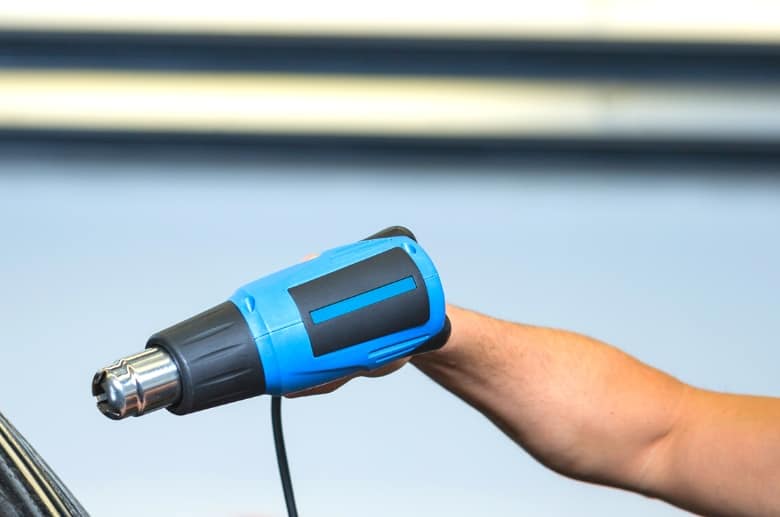
This is one of the best ways to unfreeze your garage door, although it might take much of your time. You only need a heat gun or a blow dryer to achieve this process.
- Locate the ice buildup. Identify the areas where ice has accumulated on your garage door.
- Apply dry heat. Hold the heat gun or blow dryer close to the ice buildup until it begins to melt. Move the tool back and forth to ensure even heating.
- Be cautious. Avoid applying too much heat to the bottom of your garage door, as this can damage the rubber weather seal
- Try opening the door. Once you have applied dry heat to the ice buildup, try opening the door to see if it works.
If your garage door is still stuck, apply dry heat until the ice has melted and the door can be opened.
Garage insiders pro tip: Be patient with this method as it may take some time, and always be cautious when using a heat gun or blow dryer to avoid injury or damage to the garage door.
5. Clear the Garage Floor of Any Extra Moisture
You will likely forget this process, but ensuring the frozen garage door problems don’t recur is crucial.
Once you unfreeze your garage door, you will need to:
- Sweep the garage floor, Use a broom or a dustpan to remove any snow or debris that may have accumulated on the garage floor
- Use a blower fan to remove any remaining moisture from the garage floor. Point the fan towards the floor and move it back and forth to dry the wet area
- Use a squeegee, If you don’t have a blower fan, use a squeegee to remove any moisture from the floor. Start at one end of the garage and work your way towards the other end, using long strokes to push the water out of your garage.
- Check for remaining moisture, Once you have cleared the garage floor, check for any remaining moisture. If you see any wet spots, use a towel or a mop to dry them.
Garage insiders pro tip: Clearing the garage floor of any extra moisture is important to prevent the formation of ice, which can cause the garage door to freeze shut again.
Tips To Prevent Garage Door Sticking in Cold Weather
You know the most reliable ways to open your frozen garage door during bitterly cold weather. However, we recommend going through the tips below to prevent your garage door from freezing in the future.
Reapply Weather Seal
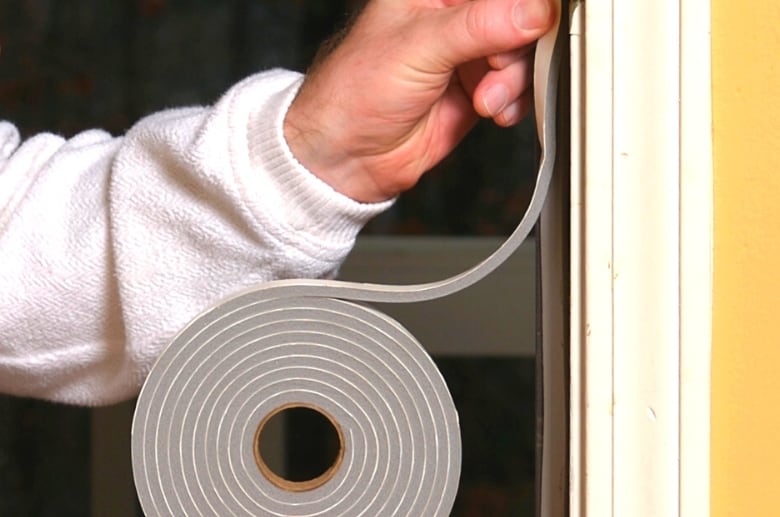
The last thing you want during winter is cold air and water in your garage. Luckily, that’s not much of a challenge, as installing a Weather Seal gets the job done.
We recommend replacing your weather seal when winter calls. Weatherstripping is easy and quick; you only need a sharp knife to remove the old seal and install a new one.
If you plan to buy a garage door bottom weather seal, here are today’s market’s most efficient weather seals.
- Universal Garage Door Threshold Seal
- Garage Door Bottom Weather Stripping Kit
- MD Building Products Garage Door Bottom
- Bowsen u+o Ring Universal Garage Door Bottom Seals
- Auto Care Products ProSeal Garage Door Bottom Seal
Remove Ice or Snow After a Storm
You can predict what will happen if you leave ice and snow around your garage during winter. It will freeze when temperatures fall overnight, and the next thing you know is that your garage door is stuck.
Therefore, shoveling snow and ice out of your garage door would be best to prevent it from freezing.
Put Some Salt Underneath Your Garage Door

This is one of the easiest tricks on our list. When you apply salt underneath your garage door, you prevent water from freezing.
Salt prevents ice formation and can help you unfreeze the door quickly. This is because salt lowers the freezing point of water and allows it to turn into a slush or liquid.
You’ll need to spread plenty of salt to achieve the desired result, but you don’t have to worry too much about wasteful use: at least half of the salt will remain on the ground and can be reused once it starts raining again.
It’s not ideal to apply the salt directly on your garage door; the idea is to sprinkle it on both the inside and outside of your garage floor for the best results.
Insulate Your Door
Consider insulating your garage doors if you want to overcome the challenges of a frozen garage door. Installing insulation on your garage door will prevent the warm air from escaping out of your garage.
It’s almost impossible to experience a frozen garage door if you insulate it and constantly shovel snow and ice outside the garage.
Note that garage doors with polyurethane insulation are more efficient and weather resistant. So, before purchasing any insulated garage door, consider the options below.
- Foam board insulation: They incorporate thin and rigid panels to increase their insulation value. It’s ideal if you rarely use your garage door, as you can damage the insulation material due to frequent door openings.
- Spray foam insulation – Insulation materials are sprayed onto your garage door to improve its R-value (thermal resistance). It’s a good option if you are working on a tight budget, although it’s not very effective.
- Cellulose insulation – It uses fiber materials to provide high-insulation value. It’s relatively cheap, although the fiber materials sag and settle over time, reducing its R-value.
- Fiberglass insulation – It’s a cheaper option than Cellulose Insulation. Usually, it’s made in a blanket form called batts fitted on your garage door to reduce heat loss. However, the batts can absorb moisture quickly, causing the insulation material to rot.
Install a Heater

Installing a heater in your garage will keep it warm, preventing a frozen garage door. Even when it’s extremely cold, the heater will continuously supply heat inside the garage to prevent water and snow around your garage door from freezing.
That way, there will be a limited chance that your garage door will freeze.
Conclusion
The last thing you would want during winter is to face a frozen garage door. Nonetheless, you should be prepared for the challenges in case they arise. Going through the guide above is vital to find frozen garage door solutions and preventive measures.
We recommend checking the weather forecast to know when the temperature drops below freezing. With that in mind, you can prevent problems caused by extremely cold weather.

